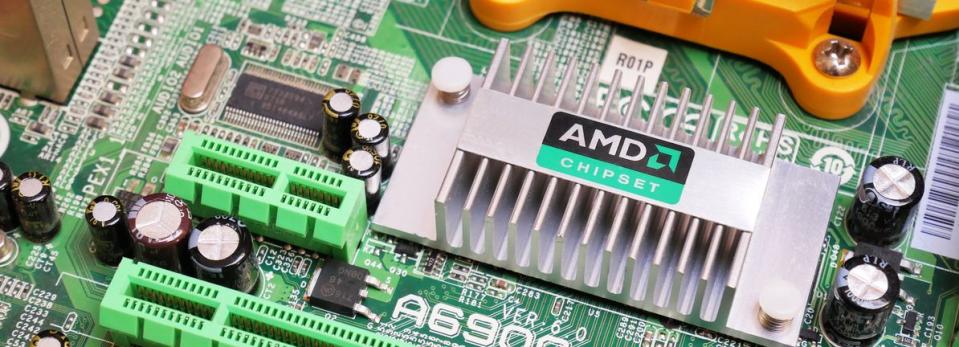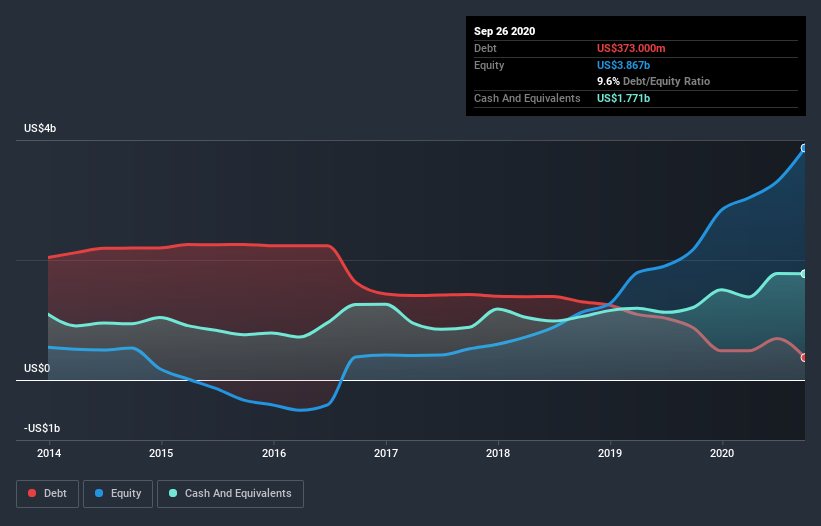Is Advanced Micro Devices (NASDAQ:AMD) Using Too Much Debt?

David Iben put it well when he said, 'Volatility is not a risk we care about. What we care about is avoiding the permanent loss of capital.' So it seems the smart money knows that debt - which is usually involved in bankruptcies - is a very important factor, when you assess how risky a company is. As with many other companies Advanced Micro Devices, Inc. (NASDAQ:AMD) makes use of debt. But is this debt a concern to shareholders?
When Is Debt A Problem?
Debt is a tool to help businesses grow, but if a business is incapable of paying off its lenders, then it exists at their mercy. In the worst case scenario, a company can go bankrupt if it cannot pay its creditors. However, a more frequent (but still costly) occurrence is where a company must issue shares at bargain-basement prices, permanently diluting shareholders, just to shore up its balance sheet. Of course, plenty of companies use debt to fund growth, without any negative consequences. The first step when considering a company's debt levels is to consider its cash and debt together.
Check out our latest analysis for Advanced Micro Devices
How Much Debt Does Advanced Micro Devices Carry?
You can click the graphic below for the historical numbers, but it shows that Advanced Micro Devices had US$330.0m of debt in September 2020, down from US$872.0m, one year before. But it also has US$1.77b in cash to offset that, meaning it has US$1.44b net cash.
How Strong Is Advanced Micro Devices's Balance Sheet?
According to the last reported balance sheet, Advanced Micro Devices had liabilities of US$2.42b due within 12 months, and liabilities of US$739.0m due beyond 12 months. On the other hand, it had cash of US$1.77b and US$2.14b worth of receivables due within a year. So it can boast US$753.0m more liquid assets than total liabilities.
This state of affairs indicates that Advanced Micro Devices's balance sheet looks quite solid, as its total liabilities are just about equal to its liquid assets. So while it's hard to imagine that the US$91.8b company is struggling for cash, we still think it's worth monitoring its balance sheet. Simply put, the fact that Advanced Micro Devices has more cash than debt is arguably a good indication that it can manage its debt safely.
Even more impressive was the fact that Advanced Micro Devices grew its EBIT by 223% over twelve months. That boost will make it even easier to pay down debt going forward. When analysing debt levels, the balance sheet is the obvious place to start. But ultimately the future profitability of the business will decide if Advanced Micro Devices can strengthen its balance sheet over time. So if you want to see what the professionals think, you might find this free report on analyst profit forecasts to be interesting.
Finally, a business needs free cash flow to pay off debt; accounting profits just don't cut it. While Advanced Micro Devices has net cash on its balance sheet, it's still worth taking a look at its ability to convert earnings before interest and tax (EBIT) to free cash flow, to help us understand how quickly it is building (or eroding) that cash balance. In the last three years, Advanced Micro Devices's free cash flow amounted to 33% of its EBIT, less than we'd expect. That's not great, when it comes to paying down debt.
Summing up
While it is always sensible to investigate a company's debt, in this case Advanced Micro Devices has US$1.44b in net cash and a decent-looking balance sheet. And we liked the look of last year's 223% year-on-year EBIT growth. So is Advanced Micro Devices's debt a risk? It doesn't seem so to us. When analysing debt levels, the balance sheet is the obvious place to start. But ultimately, every company can contain risks that exist outside of the balance sheet. For example, we've discovered 4 warning signs for Advanced Micro Devices that you should be aware of before investing here.
When all is said and done, sometimes its easier to focus on companies that don't even need debt. Readers can access a list of growth stocks with zero net debt 100% free, right now.
This article by Simply Wall St is general in nature. It does not constitute a recommendation to buy or sell any stock, and does not take account of your objectives, or your financial situation. We aim to bring you long-term focused analysis driven by fundamental data. Note that our analysis may not factor in the latest price-sensitive company announcements or qualitative material. Simply Wall St has no position in any stocks mentioned.
Have feedback on this article? Concerned about the content? Get in touch with us directly. Alternatively, email editorial-team@simplywallst.com.


